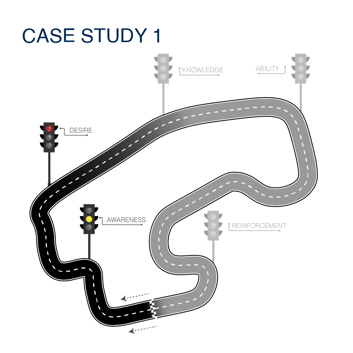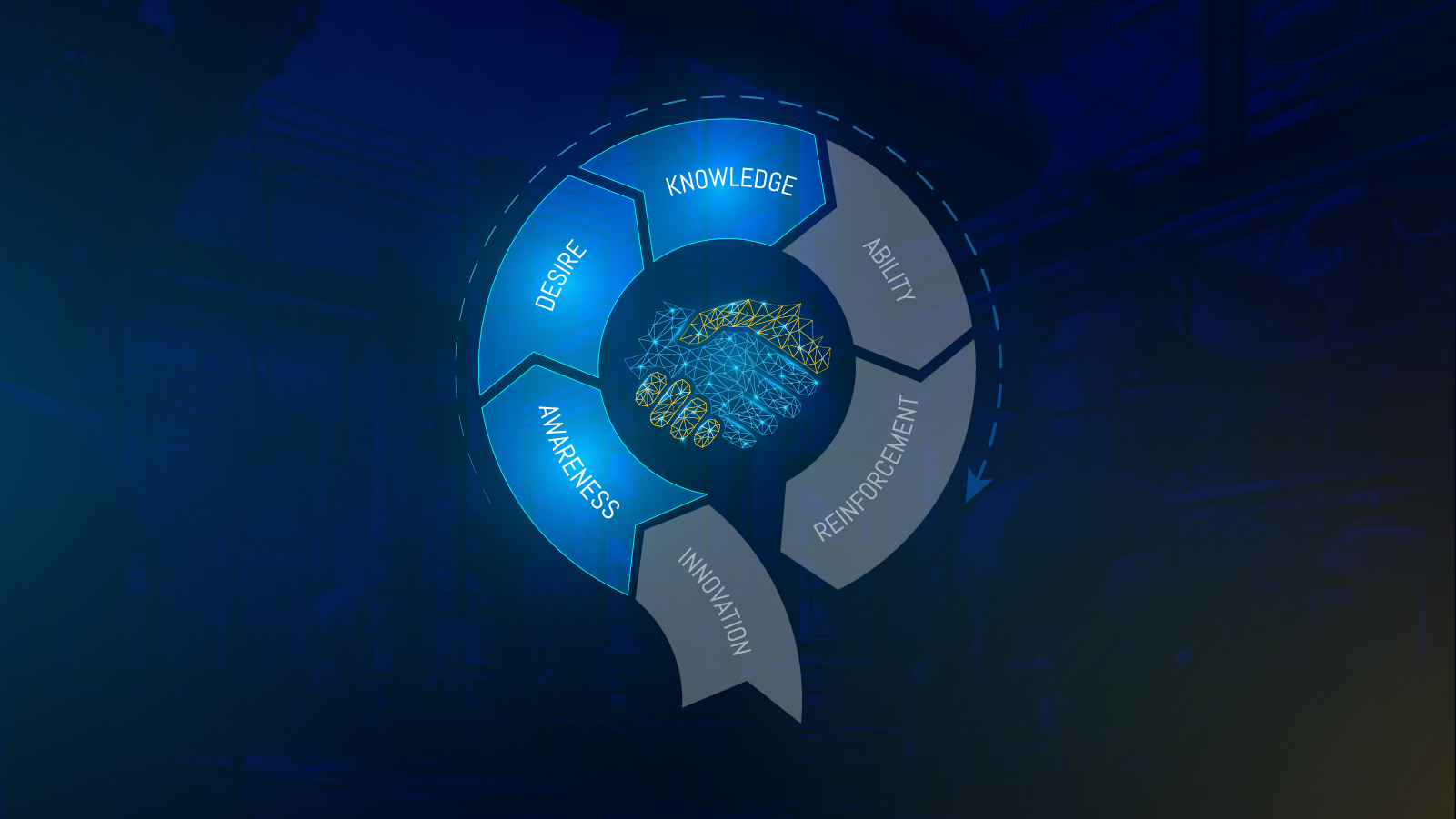Digital Completions in Plant Modifications and Upgrades
Unlike greenfield or any new build construction projects, plant modifications and upgrades present a unique set of challenges. Work is carried out...
4 min read
 Lisa De Vellis, PE
:
Oct 9, 2023 8:00:00 AM
Lisa De Vellis, PE
:
Oct 9, 2023 8:00:00 AM

Change management frameworks can help identify barriers to the successful adoption of new technological solutions. The ADKAR model of change management is one such guide that can facilitate digital transformation (DX) through accelerated uptake.
The 5-step ADKAR model is summarized as below:
“The barrier to adoption [of new technological solutions] at a personal level is lower than at an organisational level, and once it is part of an individual’s ‘way of living’, there is an increasing need for it to be part of their ‘way of working’ too.” (OEUK, 2023)
Digital transformation (DX) is, in essence, a change management program. It is therefore critical to address the human element as a critical factor in the success of digital transformation efforts. By focusing on technological development and user adaptation, organizations can overcome their pain points, imparting the value of the impending change to all users and, therefore, encouraging successful uptake of the new tool or system.
Once individuals become aware of the shortcomings in their current work methods and discover viable solutions, they tend to become more receptive to change and less resistant. However, it's important to note that Awareness and genuine belief – that is, Desire – are distinct. When someone acknowledges deficiencies in their current work methods and finds solutions that are approachable, the floodgates open. From this, successfully encouraging drive and Desire to embrace new technological solutions naturally flows.
Tools exist to increase efficiency, safety and sustainability in construction execution. Embracing innovative methods for overseeing, managing and carrying out construction and maintenance processes has the potential to address approximately 40 percent of worldwide greenhouse gas emissions, as well as saving the global economy USD 1.6 trillion per year.
Numerous digital processes, including work packages, materials management, completions and reporting across a project's lifespan can run far more efficiently and cost-effectively with the introduction of software solutions. Doing so reduces labor hours, boosts efficiency and safeguards both ROI and reputation. When these procedures rely on paper-based systems, as they often are, EPC contractors, owners and operators encounter both time and financial loss.
Successfully adopting the right digital solution(s) stands to boost the construction sector's efficiency by a remarkable 60 percent. If that’s not enough, here are 7 additional reasons why digital transformation is desirable:
In cases where there is resistance to embracing the onboarding of new tools and ways of working, the chances of successfully implementing a digital transformation are slim. Addressing this common challenge during digital transformation journeys is most effectively accomplished in partnership with a digital expert who can help nurture a strong willingness – Desire – to integrate new digital tools within your team. By instilling a sense of enthusiasm and urgency for the onboarding of digital solutions, you can significantly propel your DX efforts toward scalability and maximum ROI.
For instance, in a real-world UKCS brownfield case study involving the introduction of new digital tools for materials management, work packs and completions, initial discussions with senior management showed that there was openness and enthusiasm about the idea of adopting digital solutions. In this instance, there was Awareness (ADKAR Step 1) regarding the benefits of digitalization for improving brownfield construction efficiency. Upper-level management even demonstrated a strong Desire (ADKAR Step 2) to prepare their team for a phased digitalization onboarding.
However, to successfully advance an organizational transformation through all five ADKAR steps, it's not sufficient for only some groups within the organization to progress. All stakeholders – namely, all end users regardless of level – must actively and willingly participate in each of the five ADKAR stages. The stumbling block in this instance was in cultivating a Desire (Step 2) among middle management and engineering, who demonstrated far less willingness to change their current way of working relative to their upper-management counterparts.

When looking at the digitalization value chain, the stumbling blocks to successful adoption tend to be downstream, closer to the hands-on and regular use of, in this case, the new technological tool. Middle management and engineering, it turns out, expressed a reticence to adopt new practices because changes to daily ways of working were not welcome. And, humans are generally resistant to change. The lack of Desire to change throughout the organization resulted in poor uptake of the provided tool.
To cultivate a Desire to change, a dual top-down and bottom-up approach in digital partnership is best. In the above instance, upper management was on board, but their Desire did not organically trickle down to middle management. This needs to be a proactive process wherein an evidence-based case is made for how the change will make people’s jobs easier and improve their performance and overall well-being at work.
It is middle management downstream through to the end users who will become ambassadors for the uptake of a new system – digital partners recognize this and, when done right, revolve product development around the user experience. Involving middle management in the decision-making process from the get-go, including seeking their input as to which software solution best solves their on-the-ground workflow problems, is smart.
Granting agency and choice to end users as early in the DX proves as possible can go a long way to cultivating a Desire to change. Only then can the ADKAR change management model advance to facilitate the uptake of new digital solutions.

Working in a robust digital partnership is the best way to encourage Desire for change. The digital partner brings the evidence base and is used to working throughout levels of an organization toward successful digital transformation for scalability and maximum ROI.
The right digital partner can help to:
As with the application of any change management framework, each ADKAR stage out to be actively pursued and monitored for progress. To that end, your digital partner can help:

Unlike greenfield or any new build construction projects, plant modifications and upgrades present a unique set of challenges. Work is carried out...

Turnarounds and shutdowns are among the most critical—and stressful—phases in the management and operation of industrial assets. These planned...

Offshore decommissioning and asset retirement present significant logistical, regulatory, safety, fiscal and reputational challenges. The process of...

“Even the most advanced technology can’t achieve anything by itself. Value emerges as a combination of the tool and the people who operate it....

To realize increased efficiencies in construction execution, the ability to adapt to change by onboarding new technologies is paramount....

In the construction execution of complex assets such as brownfield projects, embracing digital transformation (DX) is increasingly important. The...